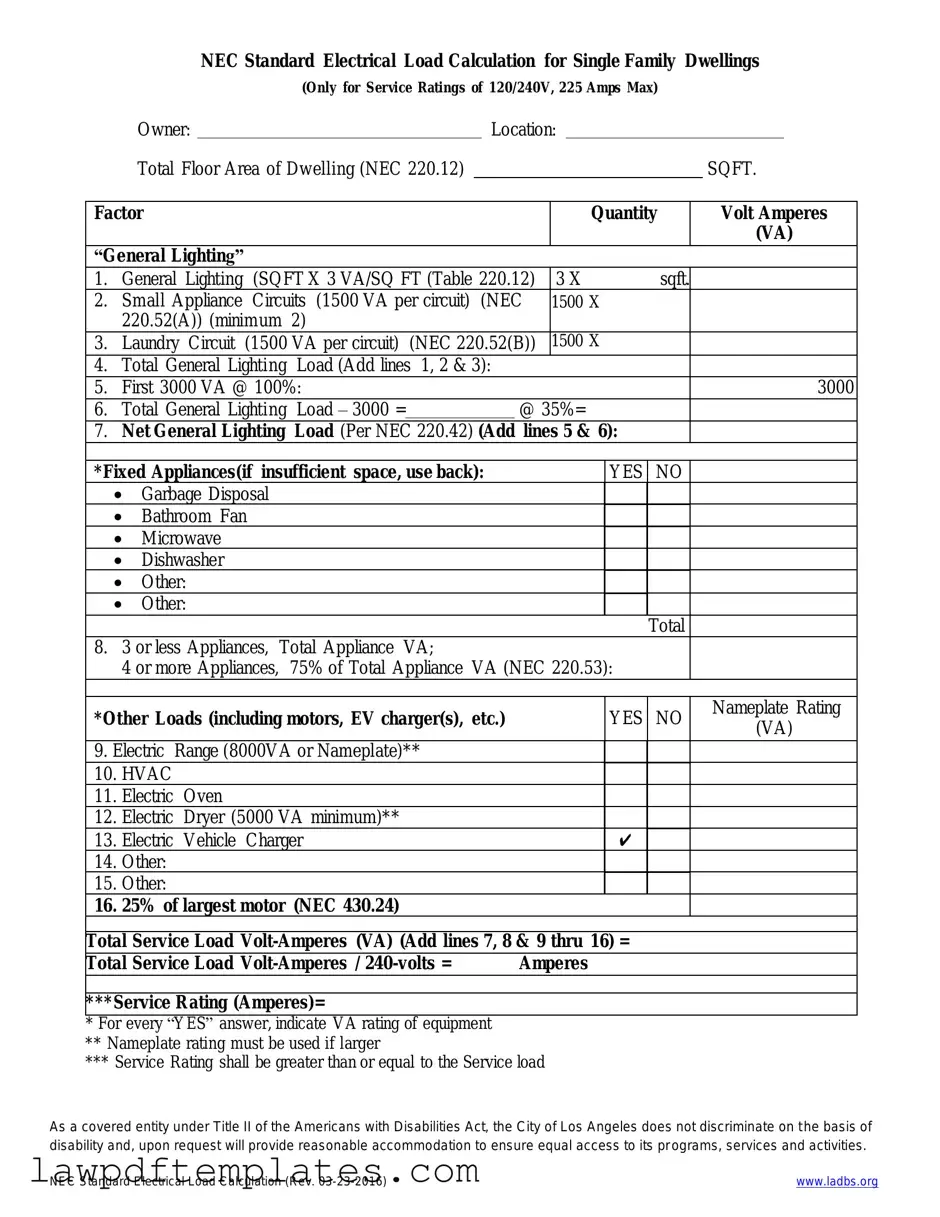Filling out the LADBS NEC Standard Electrical Load Calculation form can be a daunting task, especially for those who are not familiar with electrical codes. One common mistake people make is failing to accurately calculate the total load. It's essential to consider all the electrical appliances and devices that will be used in the space. If you overlook even one item, it can lead to an incorrect total load, potentially resulting in safety hazards or code violations.
Another frequent error is neglecting to account for demand factors. The form requires you to apply specific demand factors for different types of loads. Many individuals either skip this step or use incorrect factors, which can skew the calculations. Understanding how to apply these demand factors is crucial for an accurate assessment of the electrical needs.
Additionally, some people misinterpret the requirements for the service entrance capacity. The form asks for the size of the service entrance, but it's easy to confuse this with the load calculations. Ensure that you provide the correct service size that aligns with your total load calculation. This detail is vital for compliance and safety.
Another mistake involves not including future expansion needs. Many individuals focus solely on current electrical needs without considering potential future growth. If you plan to add more appliances or devices later, it's wise to factor in those additional loads now. This foresight can save you time and money down the line.
Inaccurate unit conversions are also a common pitfall. When filling out the form, you may need to convert units, such as from watts to kilowatts. If these conversions are done incorrectly, it can lead to significant errors in your calculations. Double-checking your math can prevent this issue.
Lastly, many people forget to review their completed form before submission. A quick review can catch errors, inconsistencies, or missing information that might otherwise go unnoticed. Taking the time to proofread your work can make a big difference in ensuring your form is accurate and complete.

